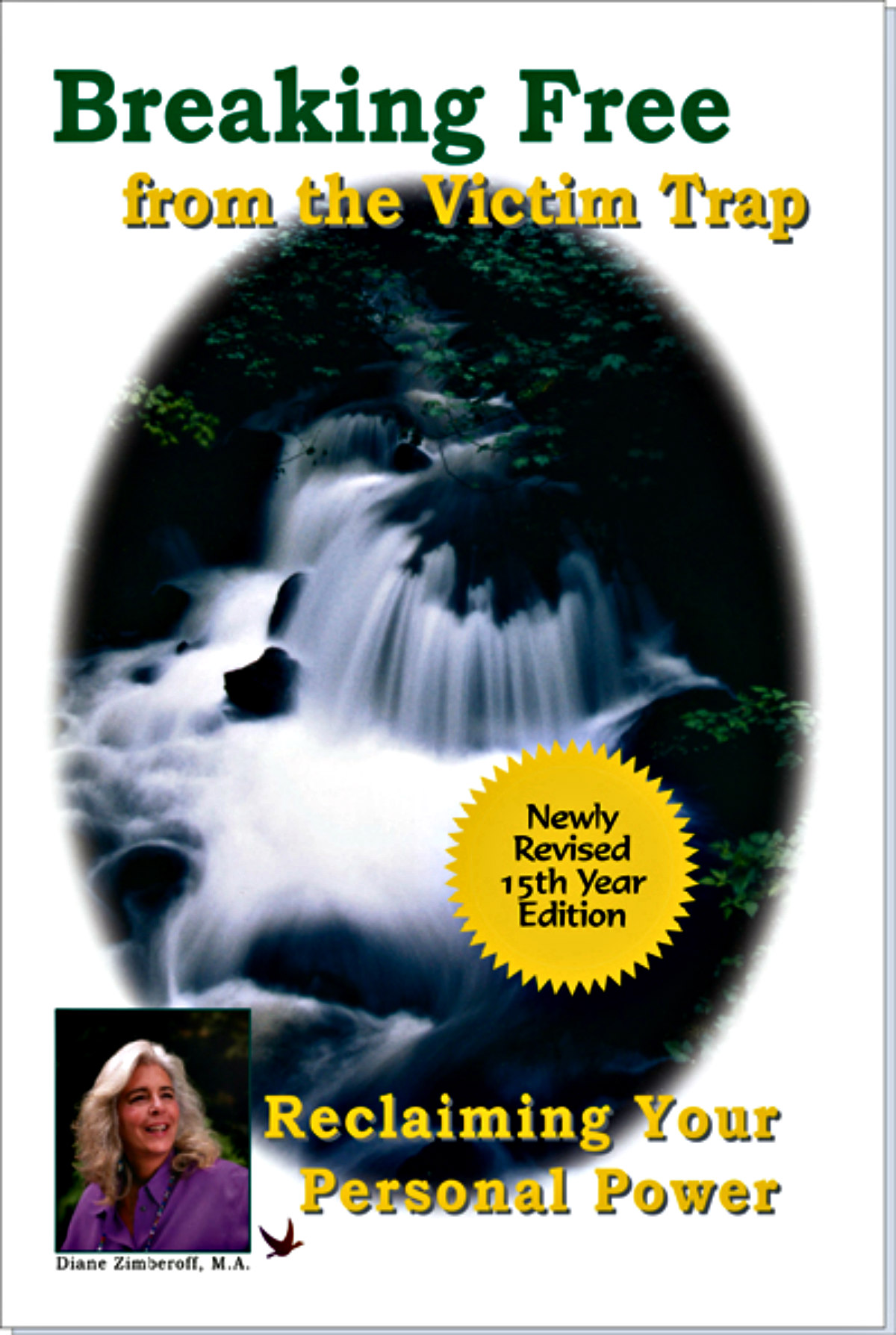Breaking Free from the Victim Trap: Reclaiming Your Personal Power, A Book Review

Diane Zimberoff, Marriage and Family therapist and creator of Heart – centered hypnotherapy and director of The Wellness Institute, wrote Breaking Free from the
Victim Trap in 1989, revised in 2011. The book identifies how people find themselves players in the victim triangle and then recommends ways to break free and reclaim the authentic self.
Part I is Identifying the Victim Triangle, the Dysfunctional Family and Codependency.
There are ten chapters of characteristics and behaviors of the victim, the rescuer, and the persecutor, and how people switch from role to role, with case studies, questionnaires, and models. “You can tell what is happening in your consciousness by the people that you attract into your life. If you have a lot of victims in your life, you can be sure that you are a rescuer.” (Zimberoff, p. 8) Rescuers tend to do for people what they can and should be doing for themselves. The rescuer actually keeps others helpless so as to feel more powerful, setting up movement into the triangle. The powerful feelings for the rescuer come from having power by “helping”, often working to keep the victim from healing.
When people feel powerless, they can exhibit self-defeating behaviors, often using excuses and blame to justify staying in the victim mode. Victims attract rescuers, and then move into persecuting them for the rescue, making the rescuer then feel like a victim. Victims get power from feeling helpless, at least for a while. However, this can lead to substance
abuse or other unhealthy patterns of behavior, as the victim continues to need someone or something to blame.
The persecutor in the victim triangle usually uses guilt as a means to control, often due to resentment from being rescued. “The persecutor is the aspect of the victim that lashes out because of feeling so inferior, helpless and out of control. The persecutor turns the fear
into anger and blames everyone and everything for his problems.” (Zimberoff, p. 28) People in these dysfunctional relationships move from victim to persecutor to rescuer, recreating chaos and drama due to learned patterns, often in one’s early life.
Part II is Treatment: Turning the Victim Triangle into a Circle of Power through Personal
Transformation. The six chapters in this section explain the personal transformation process, walking the reader through hypnotherapy as a means of regressing to childhood and then changing the patterns in the subconscious, truly taking responsibility for one’s self and releasing self from responsibility of others, breaking free from the victim trap. As a person is freed from the trap, he/she is then able to heal the inner child, learning
more healthy expression of feelings.
The questionnaires in the book are very helpful for identifying specific feelings, patterns, and choices in our lives, which then is a springboard to moving forward into wanting more healthy thinking. Zimberoff explains the modes available to achieve total healing, as the old beliefs are extinguished and repressed emotions released. This then opens one’s
self up to new conclusions, which can be made permanent by using affirmations. As people claim their personal responsibility, they then move into greater awareness,
claiming their personal power, “breaking free” from the old patterns of the past and
the victim trap.
The book can be ordered from The Wellness Institute (www.wellness-institute.org) and
there is also a companion CD available. This is a “must read” for people who have grown up in alcoholic families, have addictions, or for people who recognize that they continue to be drawn into unhealthy relationships.
Works Cited
Zimberoff, D. (1989, 2011) Breaking free from the victim trap: reclaiming your personal power. Wellness Press: Issaquah, WA.
Tags: breaking free from the victim role, rescuer pattern, victim patternABOUT THE AUTHOR

Deb England
Licensed Independent Mental Health Practitioner
Licensed Professional Counselor
Advanced Clinical HypnoTherapist- Deb England began working part-time for Wholeness Healing Center in September 2004 and began full-time in May 2005. Deb practices primarily in the Broken Bow office and one day a week in the Grand Island office. Previously she had completed her practicum and internship at Morning Star Alliance, working in the Broken Bow and Grand Island offices.
LATEST ARTICLES BY Deb England
Subscribe today
Sign up to receive the latest mental health tips and inspiration